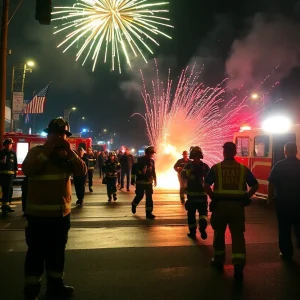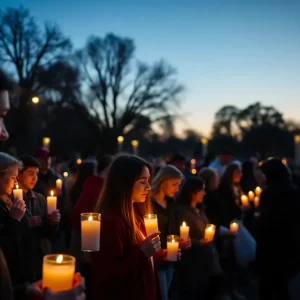Kansas City’s Efforts to End Homelessness: A Heartfelt Journey
On a lovely autumn day in Kansas City, the sun peeked through the trees, illuminating a path littered with broken ceramic pieces. Each clank announced the presence of Nick Allen, part of the city’s outreach team dedicated to ending homelessness. Allen, who has worked with the city for a year and a half, walked alongside his new colleague, Kevin Morgan, who joined the team about a month ago. Both men share a unique perspective on their roles—having themselves experienced homelessness, they bring vital insights that help them connect with those in need.
Understanding the Challenges
As Allen makes his way along roads often less traveled, he sheds light on an important point made by Josh Henges, the city’s houseless prevention coordinator. He says, “Outreach workers really connect with people facing unimaginable hardship.” Henges leads a team of five outreach workers, two of whom are personal reflections of past struggles. Their role is not just to offer resources but to provide hope and dignity to those who often feel invisible.
A City in Need
Kansas City has a plan to tackle homelessness, launched in 2022 which includes investment in affordable housing options. However, the city currently operates without a permanent low-barrier shelter—a resource many other cities have adopted. These shelters play a vital role by permitting individuals to enter without the prerequisite of attending certain programs or treatment—steps considered crucial in decreasing the population living outdoors. Alarmingly, Kansas City holds the highest percentage of chronic homelessness among major U.S. cities, with almost 96% of an estimated 280 chronically homeless individuals living outside.
A Day in the Life of Outreach Workers
On that bright fall day, Allen and Morgan visited several campgrounds, speaking to individuals in need. They met people like Eugene Wallace, a 35-year-old man who has spent years sleeping outside. When Allen approached Wallace to share the exciting news about his housing assistance, Wallace’s joy was palpable. “Are you serious?” he exclaimed with disbelief before his eyes welled up with tears. “Thank you.” He shared his deep desire for a warm and peaceful place to call home.
Building Relationships of Trust
Allen attributes part of his success to a philosophy called “progressive engagement.” This means showing up consistently and persisting with individuals until trust is established. “I spend about 35 hours a week in the field just trying to connect,” he explained. Sometimes, this involves focusing on specific individuals who may be caught in cycles of difficulty, including relationships with drugs or crime.
He reflected on the frustrations of having limited immediate solutions for the community he serves. “People die because you don’t have answers for them,” he noted. Yet, despite the challenges, it’s evident that Allen has won the trust of many. Fostering relationships is a complicated dance, and at times it feels like running on a “hamster wheel,” with many individuals cycling back to their previous circumstances of hardship.
Two Types of Outreach
Allen differentiates his outreach into two categories: Type 1 and Type 2. Type 1 outreach is about distributing immediate needs like meals and supplies, while he identifies as a Type 2 worker, focusing instead on long-term solutions like housing. This involves connecting individuals to essential services—including job assistance, mental health resources, and substance use treatment.
The Importance of Support
When encampments grow dangerous, the city engages in a “clearance and closure with support” process to ensure individuals are not just displaced but offered new resources. Allen recalls how in one instance, a multi-agency effort managed to support 71 individuals during a month-long operation for a specific encampment. “The kind of support that really changes lives takes effort, and it often involves numerous social workers and agencies working together,” he emphasized.
Seeking Permanent Solutions
As Kansas City continues to navigate the complexities of the homelessness crisis, there are plans to establish a permanent low-barrier shelter; however, discussions have faced resistance. For now, Allen tries to keep his focus on the small wins, and assisting one more person each day to find housing. The rollercoaster of emotions is palpable in his job, but for individuals like Eugene Wallace, the desire for a cozy space to call home is at the forefront.
After he successfully signed lease documents, Wallace joyfully texted his mom, who responded with, “I love you and I’m proud of you,” as he held up a key to his new future. This moment reflects all the hard work and dedication of outreach workers like Allen—proving that while the journey is long, every step toward a solution is a victory worth celebrating.







